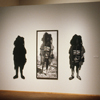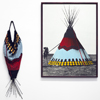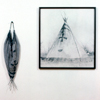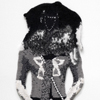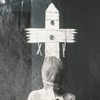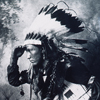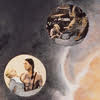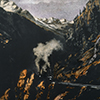Native Intelligence. 1987–92 Click on images to view project. |
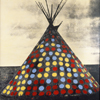 |
||||||||
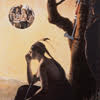 |
||||||||
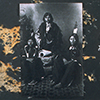 |
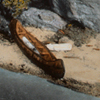 |
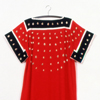 |
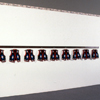 |
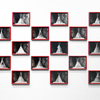 |
||||
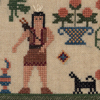 |
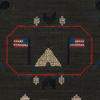 |
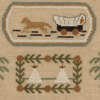 |
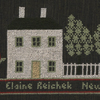 |
 |
||||
Native Intelligence, 1987–92 Americans grow up with and into a vast storehouse of images that eventually permeate their vision. It’s never possible to see “purely,” without cultural influence or mediation, but I feel it is necessary to sort out what to keep from one’s heritage and what to discard. My work in the 1980s and early 1990s was a personal attempt at this. Native Intelligence addresses imagery of Native Americans—their dwellings, their “wilderness” locale, their clothes, and their bodies. Pictures white Americans and Europeans have made about Native American cultures—ethnographic photographs, nineteenth-century paintings, museum dioramas, and backyard snapshots—reveal far more about the culture that produced them than the one they purport to show. Native Intelligence combines a variety of objects and materials, some present in previous bodies of work and others, new for me, that pointed toward future explorations. Like Dwellings (1982–83), this project pairs enlarged ethnographic photographs with hand-knitted replicas hung upside down from a peg. Each of the tepees has an iconography of pictographs that can be read, if one knows the code. My works emphasize the colonizing culture’s tendency to aestheticize these motifs and misread them as purely design elements. A series of photocollages includes painting and photography, Hollywood movies, advertising, and government documentation. The collage process is visible; it is clear that the smaller inset photographs were pasted onto the larger image and that color has been applied by hand (another antiquated technique). The central image in Red Delicious—the painting The Widow of an Indian Chief Watching the Arms of Her Deceas’d Husband (1785), by Joseph Wright of Derby—dresses the mythology of the noble savage in a deeply romantic and neoclassical pictorial language. Floating in an arc around the figure, like the stars in the Paramount logo, are circular stills from various B-grade movies in which an Indian is doing something horrible to a white woman. “Apple,” like “Oreo,” is a derogatory term for a certain type of cultural hybrid—in this case, someone “red” (that is, Indian) on the outside and white on the inside. Sign of the Cross features a hand-painted enlargement of a composite photograph by William Henry Jackson, Hell Gate on the Colorado Midland Railway (ca. 1913); smaller inset photographs show scenes from the clash of colonizing and Native American cultures and religions. This project marks my first use of embroidered samplers. In many places in Europe and America during the seventeenth, eighteenth, and nineteenth centuries, samplers were the first form of education for girls, whether at school or at home. What little girls learned, beside to sit still, was the alphabet, maybe a little geography, and, mainly, churchy maxims. In the United States, the sampler tradition died out as a major force in domestic culture during the same decades the American West was opened to white expansion and Native Americans were forced onto reservations. Instead of embroidering the language of the dominant culture in my samplers, I subverted the traditional sampler form, mixing colonial motifs and sayings with those of Native Americans. The inscription “Home Sweet Home” is applied to a tepee; Chief Joseph’s quote about the land’s lack of boundaries is paired with the Golden Rule and a listing of the first twenty-four states to be admitted to the Union. Other embroideries feature text stitched onto found fabrics with popular Indian or cowboy motifs.
|
